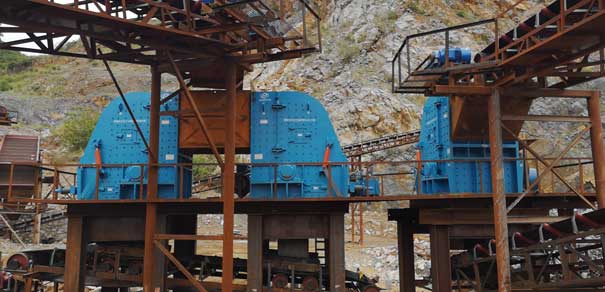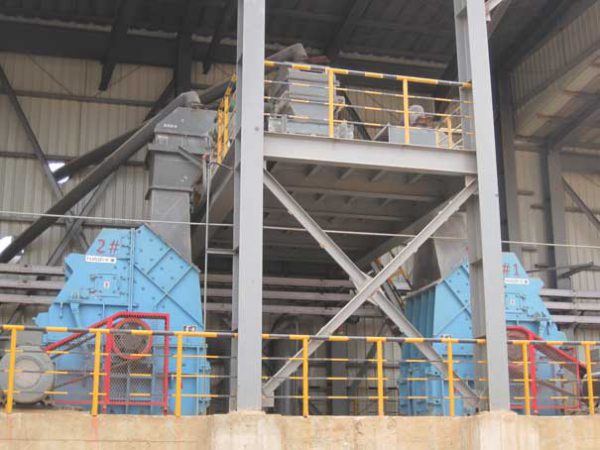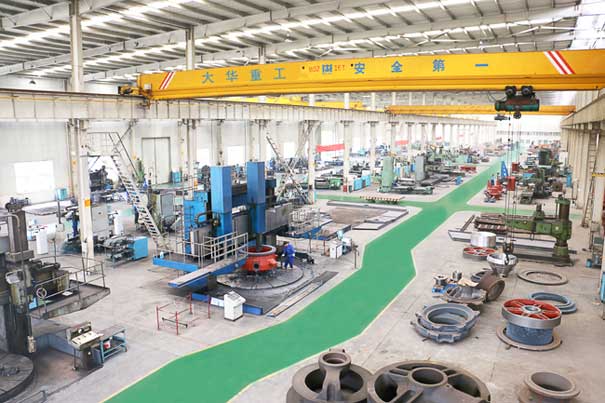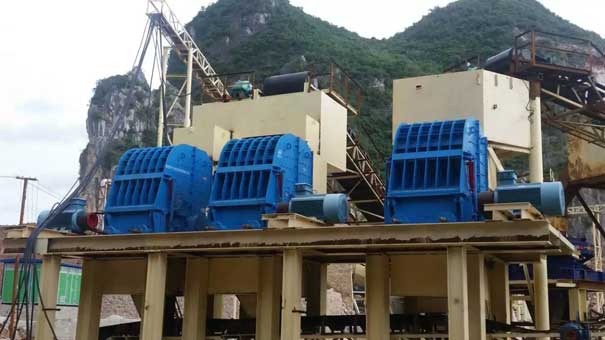The impact crusher and the hammer crusher are used as the second breaker, and they are widely used in sand and gravel production lines, but the two are different machines after all, so there are certain differences in actual production. The following is a detailed distinction a bit.

- Structure composition
The impact crusher is composed of a rotor, a blower, a percussion plate, a frame, impact crusher plate, and transmission components. The percussion plate is rigidly connected to the rotor.
The hammer is composed of rotor, hammer head, hammer frame, pin shaft, frame, crushing plate, sieve plate, transmission parts, etc. The hammer head is hinged and supported on the hammer frame. - Crushing cavity
The crushing cavity of the impact crusher is larger, so that the material has a certain movement space and makes full use of the impact. In comparison, the crushing cavity of hammer crushing is small, the impact effect cannot be fully exerted, and the impact crusher is a multi-cavity crushing structure, which is more fully crushed. - Slab hammer and hammer head (crushing principle)
The blowback hammer and the rotor are rigidly connected, and the inertia of the entire rotor is used to impact the material (free crushing, impact crushing, milling crushing), so that it not only crushes but also obtains greater speed and kinetic energy. The board hammer is to greet the input material from bottom to top for impact crushing, and throw it onto the upper impact crusher board.
The hammer head of the hammer breaks the material by a single blow (free crushing, impact crushing), and the speed and kinetic energy obtained by the material are limited. The hammer head strikes the material along the direction in which the material falls, and the crushing effect is small. - Wear resistance of vulnerable parts the wear of the impact crusher hammer often occurs on the side facing the material, and the metal utilization rate can be as high as 45%-48%. When crushing limestone, the impact crusher hammer is not worn seriously, but when crushing granite (high hardness, cone crusher), the hammer needs to be replaced constantly.
- Discharge particle size adjustment device the hammer crusher can adjust the discharge particle size only by replacing the bottom sieve plate.
The output particle size can be adjusted in many ways for impact crusher, such as adjusting the rotor speed, adjusting the gap between the impact crusher plate and the hammer (top bolt adjustment device), etc. The European version of impact crusher can adjust the third by adding or reducing gaskets at the bottom the distance between the impact crusher board and the hammer.

- The feed chute and the impact board that require the impact of the material moisture content can be equipped with a heating device to prevent the material from sticking, so the material with a large water content can be crushed and the blockage is not easy to appear. For hammer breaking, heating cannot be used to prevent materials from sticking, and it cannot meet the requirements for crushing materials with high water content.
- Material blocking phenomenon. Relatively speaking, the phenomenon of material blocking is not easy to occur in impact crusher. One is that it can be equipped with a heating device to prevent the material from clogging due to stickiness, and the other is that there is no grate at the bottom of the impact crusher, and the particle size of the product is determined by the c impact crusher plate and the hammer. The gap between them is determined, so when handling materials with excessive moisture content, it can avoid the phenomenon of blocking the grate when crushing wet materials. The hammer crusher is equipped with a bottom screen, which increases the possibility of clogging.
- The crushing ratio and the crushing ratio of the finished product particle type impact crushing can reach more than 50, and the finished material has a good particle shape. Under the action of impact, the material to be crushed tends to be broken along its fragile layer. This selective crushing method has uniform discharge particle size, the discharge is cubic, and the content of fine powder and dust is low.
- Application scope both are suitable for crushing medium-hard materials, but impact crushers are mostly used as secondary crushing equipment, while hammer crushers are mostly used in cement production lines. They can be used as limestone raw material crushing equipment, and can also be used in sand and gravel co-production projects served as primary crushing equipment.
- In the use and maintenance market, the advanced impact crusher broken frame part is a three-part structure, only need to open the rear casing of the crusher, you can replace the hammer, impact crusher plate, liner and other maintenance operations, and parts. The interchangeability is strong, and the variety of wearing parts is small, which is convenient for the procurement and management of spare parts. The hammer crusher has many hammer heads, it takes a lot of time and manpower to replace a set of hammer heads, and the cost of overhaul and maintenance is high. The replacement of the bottom sieve is also troublesome.

Through the above comparative analysis of impact crusher and hammer breaking, do you have a deeper understanding of the two? I also hope that this comparison can provide you with a certain reference for selecting equipment.

